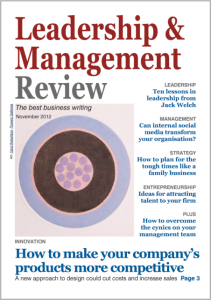Internal Audit Training for New Hires
The author discusses a few proven internal audit training strategies (i.e., shadowing, auditing process owners) for new hires.
Once you have identified someone that you want to “hire” as an internal auditor, your next step should be to develop an “Onboarding” plan for them with their boss. If you are hiring someone that will be a dedicated auditor, please ignore my quotation marks above. In most companies, however, the internal auditors are volunteers that report to another hiring manager. Therefore, as the audit program manager, you need to get a firm commitment from the auditor’s boss with regard to the time required to train the new auditor and to perform audits on an ongoing basis.
Winning Over the Boss
In my previous posting, I said that “The biggest reason why you want to be an auditor is that it will make you more valuable to the company.” The auditor’s boss may or may not agree with this statement, but the boss knows that the salary is coming out of their budget either way. Therefore, talk with the auditor’s boss and determine what the auditor’s strengths and weaknesses are. Find out which skills the boss would like to see the auditor develop. By doing this, the two of you can develop a plan for making the auditor more valuable to their boss AND the company.
Making Re-Introductions
Ideally, auditors are extraverted and have worked at the company long enough to know the processes and process owners that they will be assigned to audit—especially if they will be auditing upstream and downstream from their process area. In the past, the auditor may have been a customer or a supplier, but now the relationship with a process owner will change. Auditors are required to interview process owners, and this involves asking tough questions that might not be appropriate in the auditor’s regular job duties. Therefore, as the audit program manager, you should re-introduce the auditor to the process owner in their new capacity as an auditor. During this re-introduction, it is important to make three points:
- The auditor is going to be trained first (on auditing and ISO 13485)
- You will be shadowing the auditor during the audit, and
- The auditor’s job is to help the process owner identify opportunities for improvement
By making the first point, you are reminding the process owner of the scheduled audit—well in advance. You are also informing the process owner that this auditor will have new skills, and the process owner should have some tolerance for mistakes that new employees make. You might also mention that you would like to get the process owner’s feedback after the audit, so the auditor knows which areas they need to improve upon to become better auditors. The second point should put the process owner at ease—assuming the process owner has a good relationship with you as the audit program manager. It is important to be descriptive when “shadowing” is mentioned. Both the process owner and the auditor may not understand the process or the purpose of shadowing. The following blog posting might help with this: “How do you shadow an auditor? Did you learn anything?”
The third point is the most critical step in onboarding a new auditor. For an auditor to be successful, they must ADD VALUE! As an auditor, you cannot pretend to add value. The process owner should know their process, and they probably know which areas are weakest. The audit program manager should encourage the process owner to list some specific areas in which they are having problems. Ideally, the process owner would be informed of this need before the re-introduction. Then the process owner can be better prepared for the meeting, and hopefully, they will have a few target areas already identified. Targets with associated metrics are the best choice for a new auditor because these targets reinforce the process approach to auditing.
Next Steps for Internal Audit Training
Once your new auditor has been re-introduced to the process owners, they will be auditing, and you need to begin the training process. As with any new employee, it is important to document training requirements and to assess the auditor’s qualifications against the requirements of an auditor. Every new auditor will need some training, but the training should be tailored specifically to the needs of the auditor. The training plan for a new auditor should include the following:
- A reading list of company procedures specific to auditing and external standards that are relevant
- Scheduled dates for the auditor to shadow another experienced auditor
- Scheduled dates for an experienced auditor to shadow the auditor during the first two process audits (upstream and downstream)
- Goals and objectives for the internal audit program; and
- Any training goals that the auditor’s boss has identified for the auditor
Internal Audit Training for New Hires Read More »










